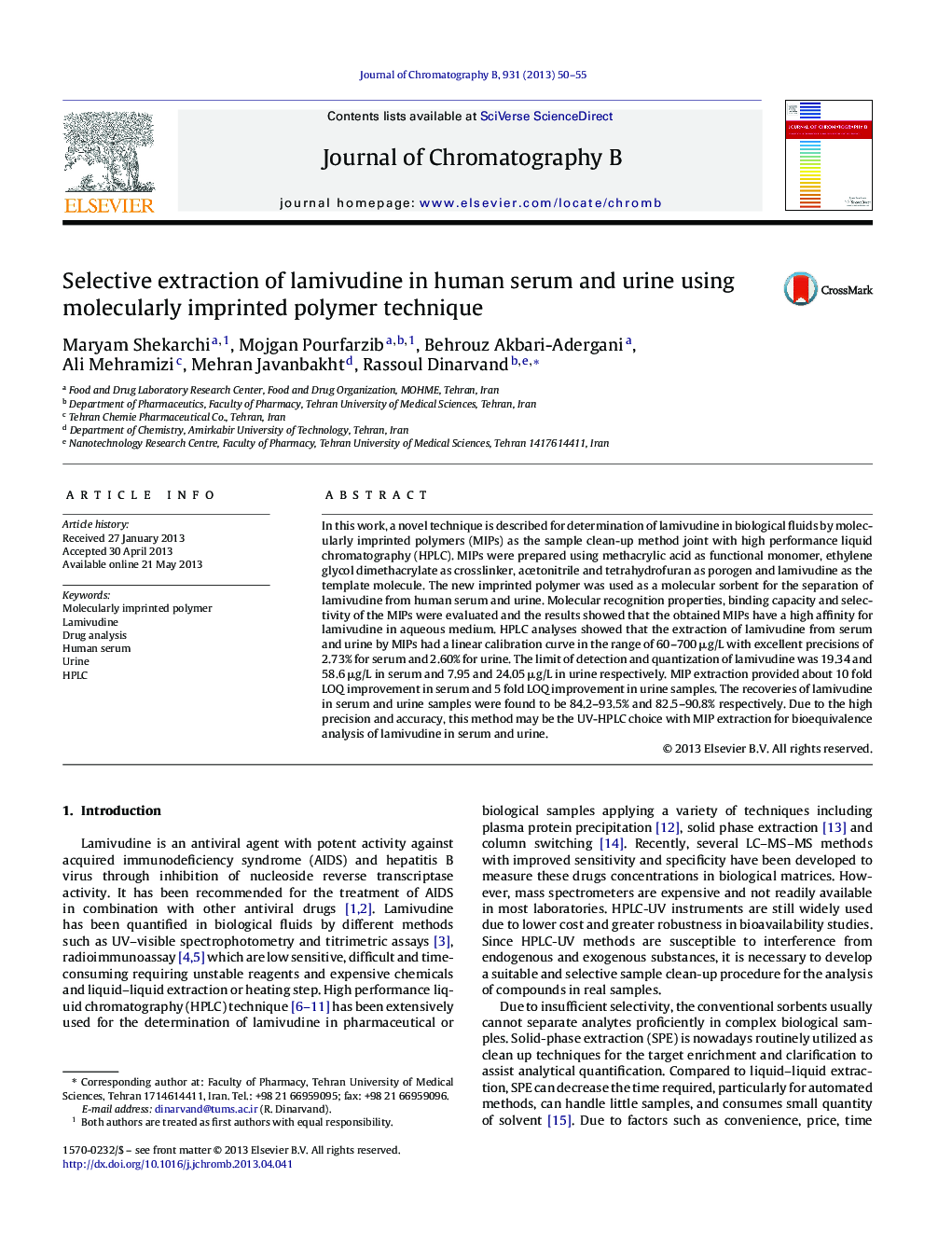| Article ID | Journal | Published Year | Pages | File Type |
|---|---|---|---|---|
| 1212879 | Journal of Chromatography B | 2013 | 6 Pages |
•Current methods of lamivudine assay require unstable reagents and expensive chemicals.•MIPs for the extraction of lamivudine were prepared using methacrylate derivatives.•Extraction of lamivudine from serum and urine by MIPs was selective and linear.
In this work, a novel technique is described for determination of lamivudine in biological fluids by molecularly imprinted polymers (MIPs) as the sample clean-up method joint with high performance liquid chromatography (HPLC). MIPs were prepared using methacrylic acid as functional monomer, ethylene glycol dimethacrylate as crosslinker, acetonitrile and tetrahydrofuran as porogen and lamivudine as the template molecule. The new imprinted polymer was used as a molecular sorbent for the separation of lamivudine from human serum and urine. Molecular recognition properties, binding capacity and selectivity of the MIPs were evaluated and the results showed that the obtained MIPs have a high affinity for lamivudine in aqueous medium. HPLC analyses showed that the extraction of lamivudine from serum and urine by MIPs had a linear calibration curve in the range of 60–700 μg/L with excellent precisions of 2.73% for serum and 2.60% for urine. The limit of detection and quantization of lamivudine was 19.34 and 58.6 μg/L in serum and 7.95 and 24.05 μg/L in urine respectively. MIP extraction provided about 10 fold LOQ improvement in serum and 5 fold LOQ improvement in urine samples. The recoveries of lamivudine in serum and urine samples were found to be 84.2–93.5% and 82.5–90.8% respectively. Due to the high precision and accuracy, this method may be the UV-HPLC choice with MIP extraction for bioequivalence analysis of lamivudine in serum and urine.
